Mosaic X-rays reveal Peruvian mummy mysteries
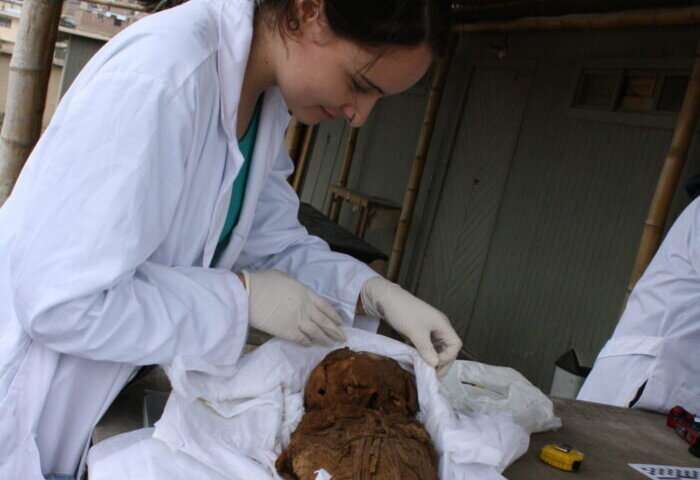
Western researchers, including two undergraduate students, have become pivotal players in developing a mobile X-ray protocol that could transform how mummies are examined in the field.
Anthropology professor Andrew Nelson and his team have pioneered a process to digitize and stitch together X-ray images so that they can non-destructively 'view' Peruvian mummy bundles in their entirety. The process will enable other anthropologists to conduct valuable work without damaging the objects.
"Lots of people have X-rayed mummies. But, as far as I know, we're the first to do the mosaic X-ray technique and do that digitally," Nelson explained.
Mummy bundles—called fardos—sometimes have been examined by unwrapping the textiles encasing the mummy. That process destroys the mummy and its context at least as much as it informs researchers about the past.
A less destructive but more time-consuming examination entails X-raying the bundles using film, which is then developed by hand, then transporting the heavy images home and analyzing them from afar.
But this new process is faster, portable and produces a far more complete picture.
Here's how it works:
Researchers bring a suitcase-sized machine—Nelson's was funded by the Social Sciences and Humanities Research Council of Canada (SSHRC) – originally designed for use by veterinarians. The X-rays then go straight to the computer in digital form. No need to process into film or transport anything off-site. Those two-dimensional images are then electronically stitched together into composite, full-body images for immediate analyses.
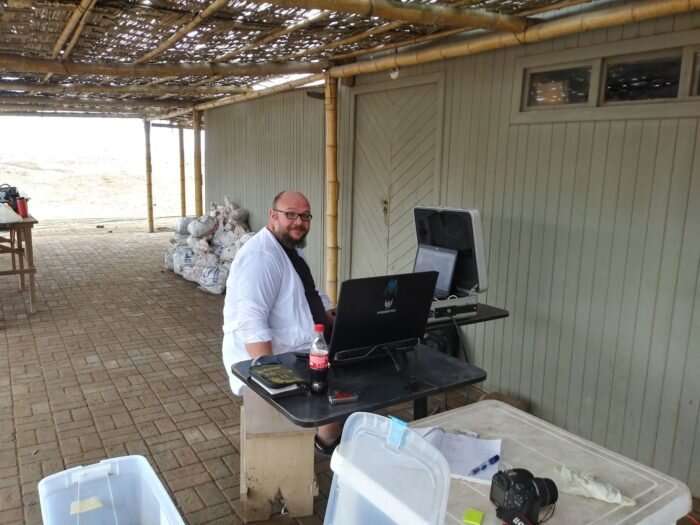
That scan can stand on its own as a more-than-basic record of the mummy's condition, position and setting. It can also offer rich enough detail for researchers to decide whether the mummy warrants further study through more detailed computer tomography (CT) scanning.
Last summer, Nelson's team conducted 880 X-rays and 31 CT scans in six days at the archaeological site of Pachacamac, Peru, where almost 200 fardos were discovered during excavation for a new museum in 2015.
This is the first time these mummy bundles—which date from about AD 1100 to AD1470—have been examined.
While the X-rays showed many mummies inside the bundles were no longer intact, the scans also indicated many were worthy of further non-destructive investigation.
"The great thing about doing the X-rays digitally and on site was the instant feedback we had," said David Seston, in his final year of undergraduate Anthropology studies and a key member of the team in data management and tech troubleshooting during the six-week study.
Anthropology Ph.D. student Joanna Motley pioneered the composite work in X-ray imaging.
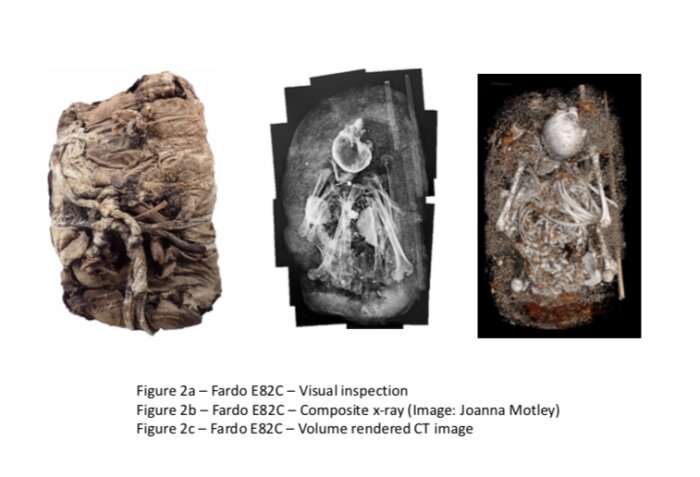
Lauren Poeta, now in her fourth year of Anthropology, said the fieldwork in Peru—which included both teaching and learning from Peruvian researchers—offered an unparalleled opportunity in experiential learning.
"It was incredible because you don't expect to see that or have the opportunity to do that after just your third year. You get to do the experiential stuff. Instead of seeing pictures in two dimensions or in a textbook, this is totally different. You start to learn what to look for and what's important to see."
Poeta developed a standardized checklist of what researchers should be looking for as they try to discover how the fardos represent a microcosm of their society, including identifying the:
- Wrapping textile;
- Position of the mummy whether extended or with legs flexed towards their chest;
- Person's age, sex and any suspected health issues before death; and
- Type and location of any other artifacts buried with them.
Some fardos that have been CT-scanned and further analyzed show unusual objects wrapped with them.
Decorative shells. Stones. A mysterious folded disc they've nicknamed a 'taco." One person has a sharp object pierced through an eye socket. Another has a tattoo on one hand. One is surrounded by a 'cloud' of cotton seeds, be it to provide filler for the fardo or as a symbol for something else, no one yet knows.
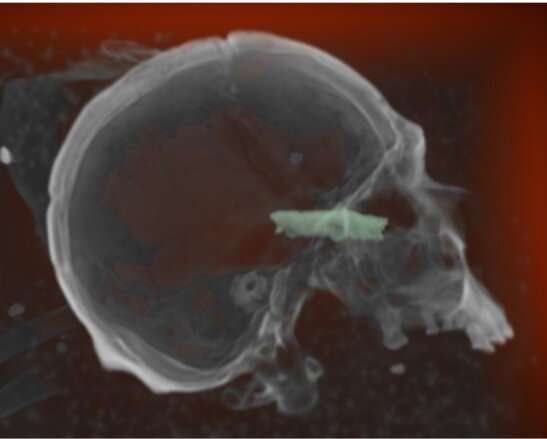
Another question as-yet-unanswered is whether mummification—the preservation of tissue and clothing—was the main intent for wrapping and encasing the bodies, or whether mummification was an unintended result of the process, coupled with the dry climate and their burial in sand.
Together, all these details form clues into who these people were as individuals, how they lived, how they interacted with their community and how they were respected in death. They are, Nelson said, individually and collectively important to the study of pre-Columbian life in Peru.
Further study of the fardos and their images continues here year-round and by Peruvian researchers, with further work expected by a Western-Peruvian team this coming summer. "It's the awesome part of having a multi-year project," Nelson said.
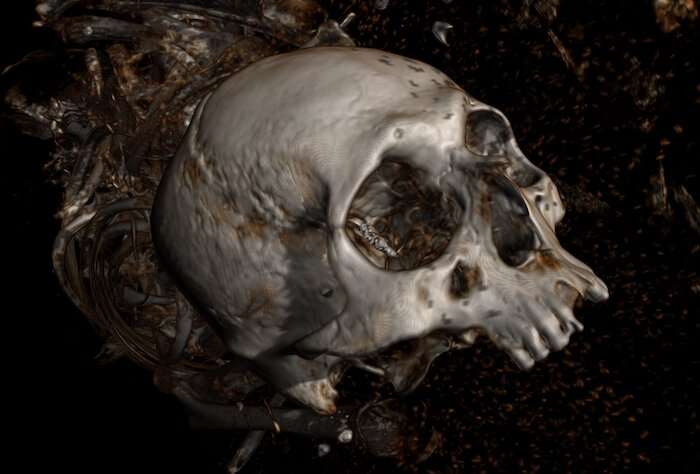
Meanwhile, they have co-authored six collaborative papers about their work during and since last summer's research in Peru, and have presented research at archaeological and anthropological proceedings.
For Poeta, the experiential learning offered critical-thinking skills and a greater passion for anthropological fieldwork.
Seston said the experiential learning was both a personal and professional stretch.
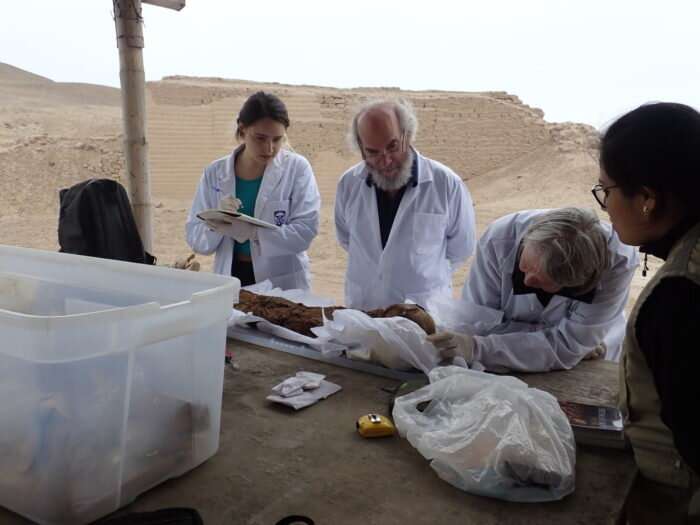
"As an undergraduate, the chances of getting this kind of opportunity are incredibly rare. I knew when we went down there that this would change my perspective—but I never expected how much.
"A lot of work I do takes place on a computer. But being actually in the field and examining them changes my perspective 100 percent. It's not just an image on a screen. These are people and you have to respect them as people. You honour them by bringing them out and bringing back their stories."
Provided by University of Western Ontario



















